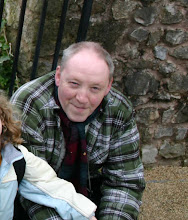A basic question with some unclarity. How did Auden first see the North Pennines? A Certain World made it clear it was a childhood dream to come here. The knowledge of the locality was acquired long before the visit. Two evidence streams (a 1972 conversation and Amor Loci (which Edward Mendelson says Auden wrote in a diary was the Rookhope Poem)) leave little doubt that Auden first came to the North Pennines by coming to Rookhope in 1919 aged 12. Now see https://www.facebook.com/media/set/?set=a.405389936201434.95437.100001912940850 and http://robertatforsythe.blogspot.co.uk/2012/11/rookhope-in-auden.html .
That all says a lot more about Rookhope but the question how did Auden first come here is still open. Two recent days spent around Rookhope and Blanchland may help answer the question. I have been out on a sunny 23rd and 29th November. Hitherto we have tried to examine how Auden could get to Rookhope and who the family might have known to stay with. Perhaps the answer was staring me in the face and it required me to drive from Blanchland to Rookhope (15 minutes) on the 23rd to see it. We know Auden became very familiar with the Lord Crewe Arms, there is no need to be detained about that. But what if (as the only decent hotel for miles and relatively close to the Dere Street (A68)), that this was where the family first booked in in 1919? The Derwent lead mines around Blanchland would have already had it on his map.
But is there more evidence in this writing for this? Perhaps there is. At the outset of Selected Poems I have long argued there are three poems each for one of his favourite Pennine Valleys. 1) The Watershed is all of Wear/Tyne/Allen by being around Killhope Nenthead. 3) The Secret Agent by name suggests Teesdale. 2) The Letter I have previously placed in Rookhope by a discussion about "A solitary truck, the last of shunting in the autumn", a specific reference to a grouse shooter's track known to have existed (more about this is in the URLs above).
As I dropped down into Rookhope, a precipitious descent with hairpins, I was driving directly into the winter sun. Suddenly the line flashed into my brain "From the very first coming down into a new valley with a frown because of the sun and a lost way". Should this be literally understood? If so clearly Auden did not come up the valley from Stanhope. He does have four choices if not the main entry road. They are a north west facing entrance on a hill road from Stanhope which descends steeply into the village. A north facing entrance past Lintzgarth (Paid on Both Sides) from Middlehope. The east facing descent from Allenheads (and the Allenheads Inn which he also used but which for a first visit is much more off the beaten track, relatively speaking Blanchland is a cultural and historical centre which would appeal to the antiquarian father). This leaves the south facing descent from the North from Blanchland.
No proof then but a suggestive argument and the invitation to the reader to go and try it all out for themselves armed with a battery of Auden texts and maps (I can suggest and do in various places).
Subscribe to:
Post Comments (Atom)











No comments:
Post a Comment